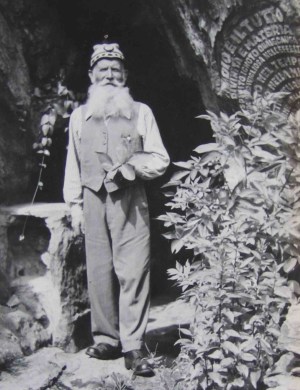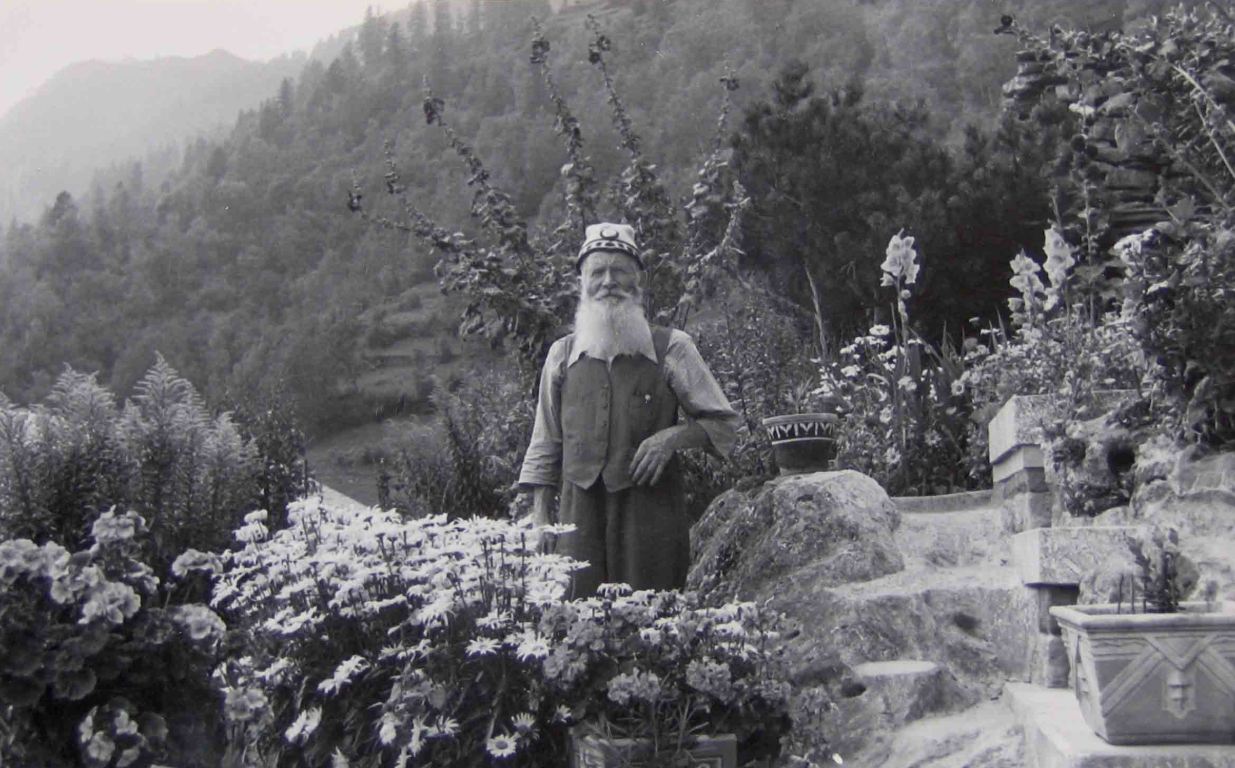by Elisabetta Sem
 Erminio Dioli in the mystical cave, 1954-55.
Erminio Dioli in the mystical cave, 1954-55.
The architect and artist, Erminio Dioli, was born in Caspoggio in 1885.
After an apprenticeship with his father, Zefferino, craftsman and fine engraver, he moved to Turin where he attended a lengthy, profitable course of technical and artistic studies.
In 1915, the Politecnico of Turin awarded him the Industrial Sculpture Teaching Certificate for Technical Institutes.
After the First World War and a brief period spent in his home town, Dioli moved to Milan to teach industrial sculpture at the Academy of Brera (1921-22).
In 1923, he was employed by a furniture manufacturer in Rovellasca, where he designed and produced cupboards for prestigious, sophisticated bars in Milan.
He also restored wooden furniture which was to guarantee him a certain professional fame in Valtellina too, where he returned in 1924 and opened a shop.
In 1926, he began to build his home on Sasso Gianaccio in Chiesa Valmalenco, known as the “Castle”.
From 1937 to 1943, Dioli travelled for his work in Calabria, Poland, Austria, Germany and Switzerland.
From 1944, he lived in Chiesa Valmalenco, where he died in 1964.
 Erminio Dioli in his garden, 1954.
Erminio Dioli in his garden, 1954.
The architectural language
Towards the end of the twenties, the maestro began to design many buildings, especially in Chiesa Valmalenco, in his own particular style of sombre lines and decorative elements inspired by nature in the Alpine area.
The distinguishing external element is the semi-circular arch, used for the first time in private homes in the Valmalenco for both the entrance and for the dormer windows: the arch breaks up the linear, static façade and is a significant partial return to a reportory of classical forms, in vogue in the architecture of the thirties.
This featured plain monumentalism with hints of ancient shapes.
Dioli used local materials, such as
serpentine stone
and the wood of larch and spruce pine, and a distinguishing feature of his houses is the flush stone masonry with designs in harmony with the surrounding natural space.
Erminio Dioli is on Facebook.
Click to open the link.